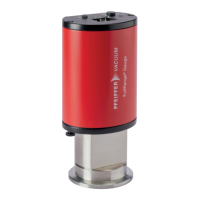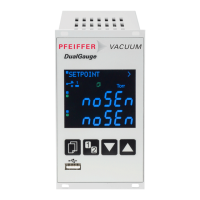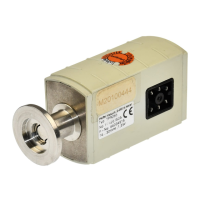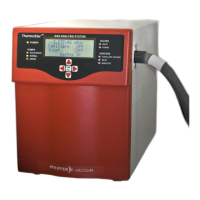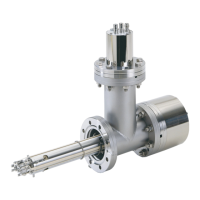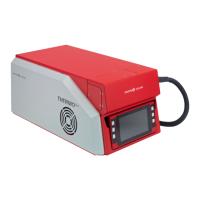18
BG 5171 BEN / B (2017-02) PBR 260
The measuring signal is gas type dependent. The relationship between the
measuring signal and the pressure is accurate for N
2
, O
2
, dry air and CO
(→ Appendix B). They can be mathematically converted for other gases
(→ Appendix C).
If the gauge is being operated with MaxiGauge™ measurement and control unit, a
calibration factor can be applied for correction of the reading (→ MaxiGauge™
TPG 256 A).
The measurement currents output by the Bayard Alpert and Pirani sensors are
converted into a pressure dependent frequency. A micro-controller converts that
frequency signal into a digital value of the measured total pressure. This value is
then supplied as analog signal from 0 to 10.20 V (pin 2 / pin 3), the valid meas-
urement range being situated between 0.774 V and 10.00 V (atmospheric pres-
sure). The output signal is limited to 10.20 V by the software.
In addition to converting the measuring signal, the micro controller's functions
include the monitoring of the emission and the calculation of the total pressure
based on the measurements from the two sensors.
Gauge failures due to contamination or wear and tear, as well as
expendable parts (e.g. filament), are not covered by the warranty.
Caution
Gauge failures due to contamination, as well as expendable parts
(filament), are not covered by the warranty.
Deposits on the electrode system of the hot cathode ionization gauge can lead to
unstable measurement readings.
Thus it is advisable to start the degas process of the anode at a pressure below
7.2×10
-6
hPa (5 mA emission current). Depending on the application, this function
can be activated via a MaxiGauge™ measurement and control unit, manually or
automatically by the control system (e.g. PLC). The PBR 260 automatically turns
the bakeout off after 3 minutes, if the bakeout has not been stopped before.
The degas process is activated when the control signal (pin 1) switches from OFF
(0 V) to ON (24 V). It is deactivated when the control signal switches from ON
(24 V) to OFF (0 V), or after a maximum of 3 minutes.
For a repeated degas process, the control signal first has to switch from ON (24 V)
to OFF (0 V), to then start degas again with ON (24 V). It is recommended that the
degas signal be set to OFF again through the systems control after 3 minutes of
bakeout, to achieve an unambiguous operating status.
The degas process is used for heating the electron collector grid to approx. 700 °C
through electron bombardment and thus cleaning the measuring element.
Gas type dependence
4.2 Operational Principle of
the Gauge
4.3 Degas
Contamination
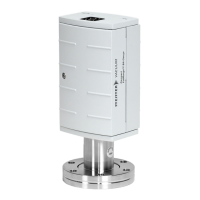
